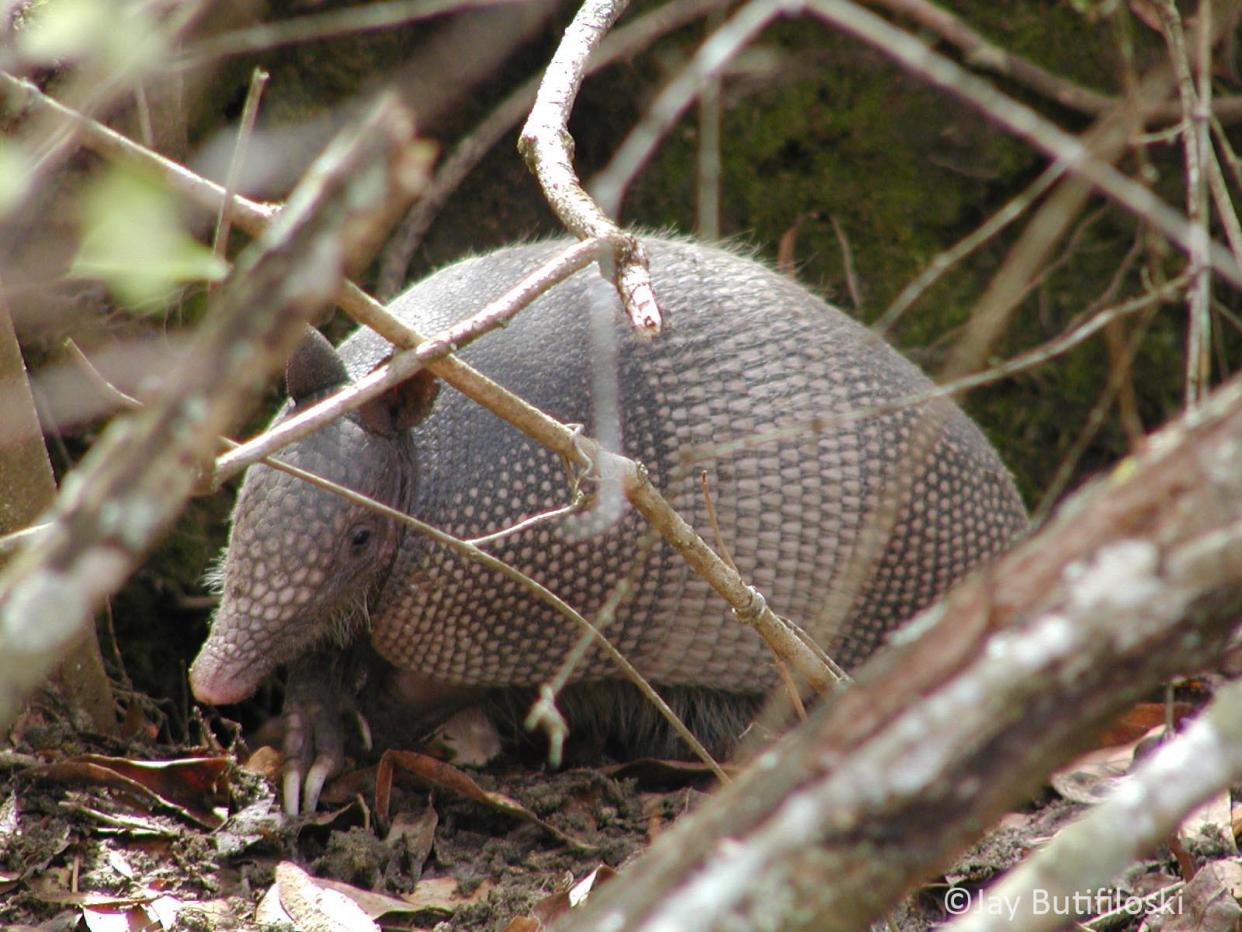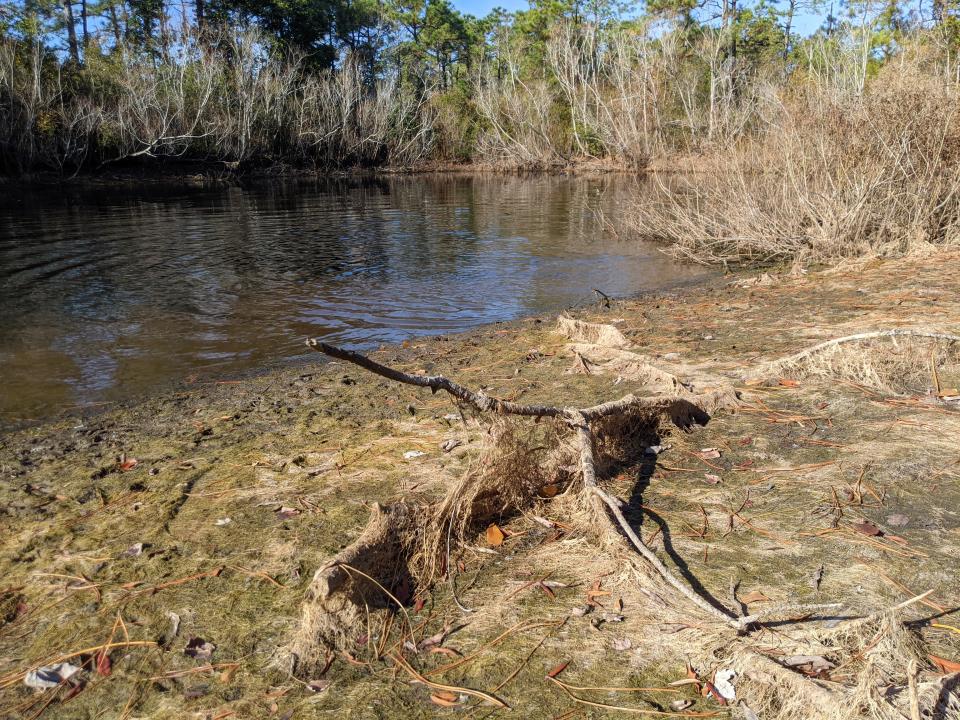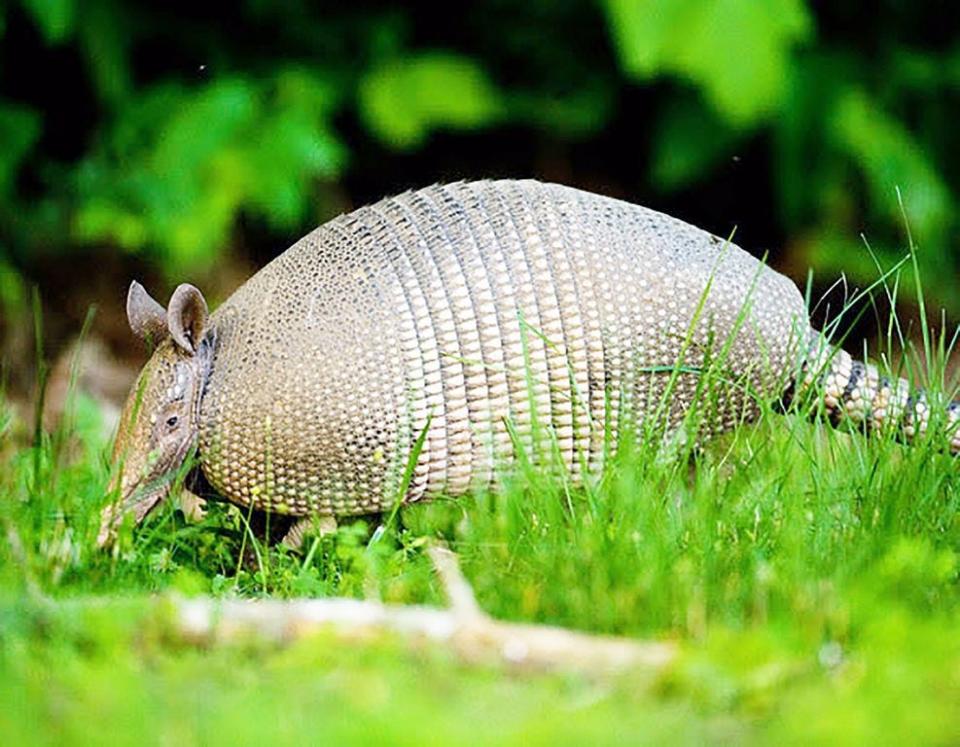This little armored creature is moving into North Carolina. Here's why.

North Carolina is growing quickly, attracting new residents from all over the country.
But some of the most recent arrivals aren't coming from those Northern states that often draw the ire of long-time Tar Heelers for bringing more traffic, higher property prices and sometimes a disdain for local ways to their state.
They're rolling - literally - in from South Carolina, Georgia and Tennessee, attracted by the promise of a temperate and warming climate, vast tracts of diggable land, room to expand, and a nearly endless supply of fire ants − a delicacy for these banded travelers.
CAROLINA DREAMIN'People are moving to NC from other states in droves. Where are they coming from, and why?
They are armadillos, and while they might be more associated with Texas and the American Southwest by most people, they are increasingly making themselves at home in the South.
And after colonizing states from Florida to Tennessee, North Carolina is their latest destination.

"Usually when a new animal shows up in a new habitat, it's an invasive brought by humans that shouldn't be here," said Betsy Roznik, associate curator of regional conservation at the North Carolina Zoo. "But with armadillos, they’re expanding on their own."
'Little armored ones'
The nine-banded armadillo, so dubbed because of the bands around its midsection, is native to Central and South America, but has been expanding north for more than a century.
Named after a Spanish word that means "little armored ones," armadillos are nocturnal animals that feed on insects and other invertebrates that they dig up and capture with their long, sticky tongue. And maybe a bit like the opossum, the armadillo isn't the cutest of animals, equipped with long ears, a pig-like snout and a scaly tail. It also has poor eyesight, but a great sense of smell.
Unique among mammals, armadillos are famous for their distinctive shell − made of hardened skin plates − and propensity to roll into a ball when threatened, although it's only the three-banded armadillo that does this.

After first being spotted in Texas in 1849, the march of the armadillo has been relentless. The first animal was spotted in North Carolina, in Macon County in the far west of the state, in 2007. Since then nine-banded armadillos have been spotted in nearly half of the state's 100 counties and confirmed in nearly 30, with sightings increasing in recent years.
Influence of climate change
So what's drawing them to the Tar Heel State?
Biologists believe there are a number of factors, including armadillo population growth in neighboring states forcing new animals to seek virgin pastures.
But a factor that is definitely working in the armadillos' favor is North Carolina's warming climate.
According to a U.S. Environmental Protection Agency seasonality report published in late 2021, all seasons have warmed in the U.S., with winter temperatures increasing by nearly 3 degrees Fahrenheit since 1896.
The National Oceanic and Atmospheric Administration (NOAA) reports that temperatures in North Carolina have risen more than 1 degree Fahrenheit since 1900.

"Under a higher emissions pathway, historically unprecedented warming is projected this century," states the agency's 2022 climate summary for North Carolina.
Climatologists have warned that cuts in greenhouse gas emissions promised by governments and big businesses in recent years won't be enough to stop a dramatic increase in temperatures well beyond the goal of keeping the warming to 1.5 degrees Celsius (2.7 degrees Fahrenheit) by the end of the century.
Like other warm-loving animals, insects and even viruses, armadillos are taking advantage of the rising temperatures to expand their range.
“I think they’re showing us what’s happening that as our climate is changing, the animals are changing their distribution," Roznik said. "Our wildlife is basically becoming redistributed as our climate is changing."
'Pretty successful' transplants
While the arrival of a new house cat-sized mammal in their backyard or along local roads might startle some people, biologists say they are largely harmless and shouldn't have too much of an impact on North Carolina's environment.
Sure, they dig holes while searching for food that can be a nuisance for farmers, golf courses and homeowners. And their burrows can be a problem for those walking off the beaten path − although those very same burrows could prove useful for other animals. But armadillos are voracious eaters, and could help control insect and grub numbers. That includes fire ants, an invasive species that's also a fairly new arrival to North Carolina and one that is also taking advantage of climate change to expand its range in North Carolina toward the mountains and the Virginia border.
UNWECLOME TRANSPLANTFire ants in Tar Heel state keep on marching
While some armadillos have been found to carry leprosy, studies have shown less than 10% of animals carry the bacteria. And like most other small animals, armadillos are inclined to flee when confronted by humans or pets - and to prevent themselves from becoming prey for black bears, coyotes and bobcats.

"They're very adaptable and very good at exploiting other habitats," Roznik said. "They don't do well with freezing temperatures, which will probably determine just how far they expand their range. But I think they're going to be pretty successful here."
Prime armadillo habitat
Just how quickly armadillos will colonize North Carolina, and in what density, is still to be determined.
To help track the animal's expansion, the N.C. Wildlife Resources Commission is asking the public to report armadillo sightings. According to a map on the iNaturalist website tracking North Carolina's armadillo sightings, there have been 116 observations since August 2016, the most recent reported on Jan. 5.
While most observations reported so far are from Western North Carolina, Eastern North Carolina's sandy soils and extensive pine forests are seen as prime armadillo habitat. And there have been reports of sightings in and around Wilmington.
In 2013, an armadillo was observed in The Cape neighborhood in Southern New Hanover County. The animal's are surprisingly good swimmers, making the ponds and wetlands around golf courses and across much of the region prime armadillo habitat,
Recent social media posts also report sightings of dead armadillos along the sides of roads, since the animals often use highways and railroads as travel corridors.
With armadillos established in South Carolina's coastal plain, it appears only a matter of time before a population − if not already − calls the Cape Fear region home.
"I think they're here for good and they're not going anywhere," Roznik said.
Have you observed an armadillo in North Carolina? Let the N.C. Wildlife Resources Commission know. Contact the agency at 866-318-2401 or at wildlifehelpline@ncwildlife.org.
Reporter Gareth McGrath can be reached at GMcGrath@Gannett.com or @GarethMcGrathSN on Twitter. This story was produced with financial support from 1Earth Fund and the Prentice Foundation. The USA TODAY Network maintains full editorial control of the work.
This article originally appeared on Wilmington StarNews: Climate change is helping armadillos move into North Carolina

